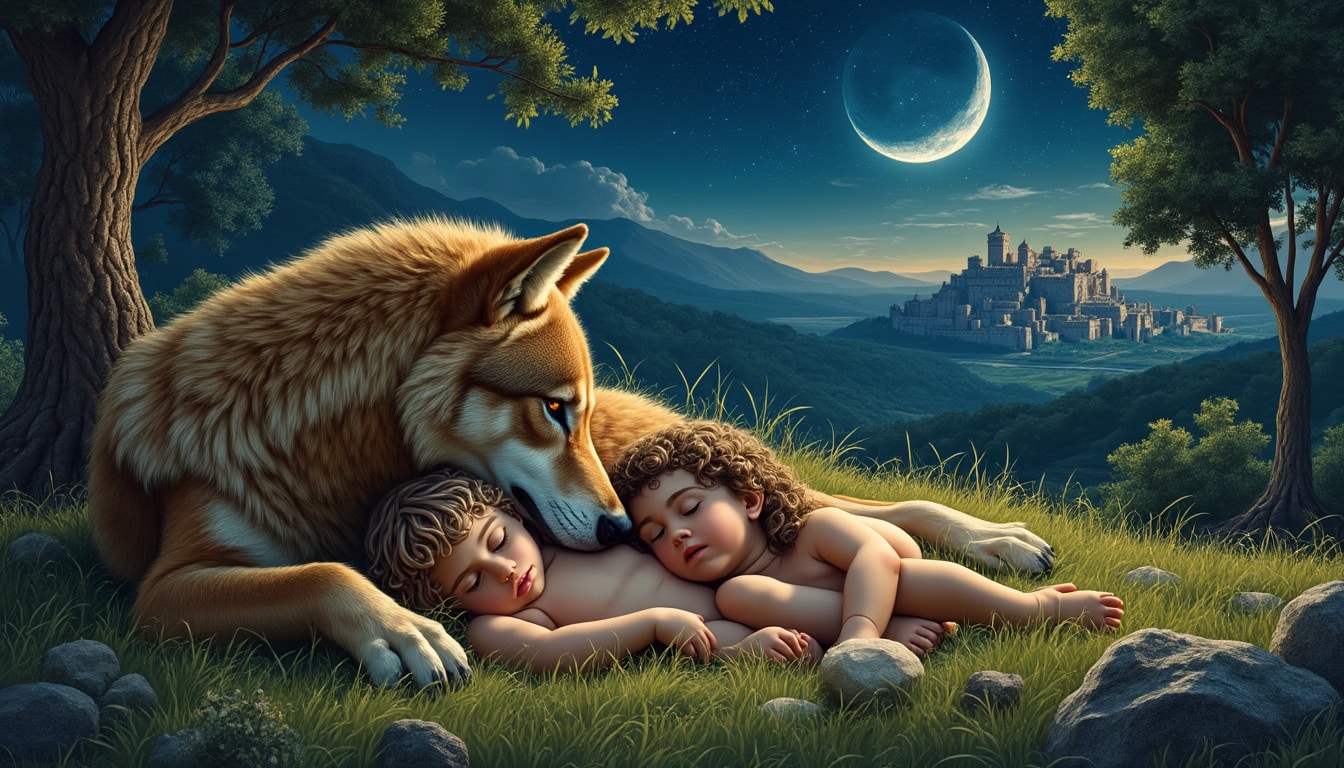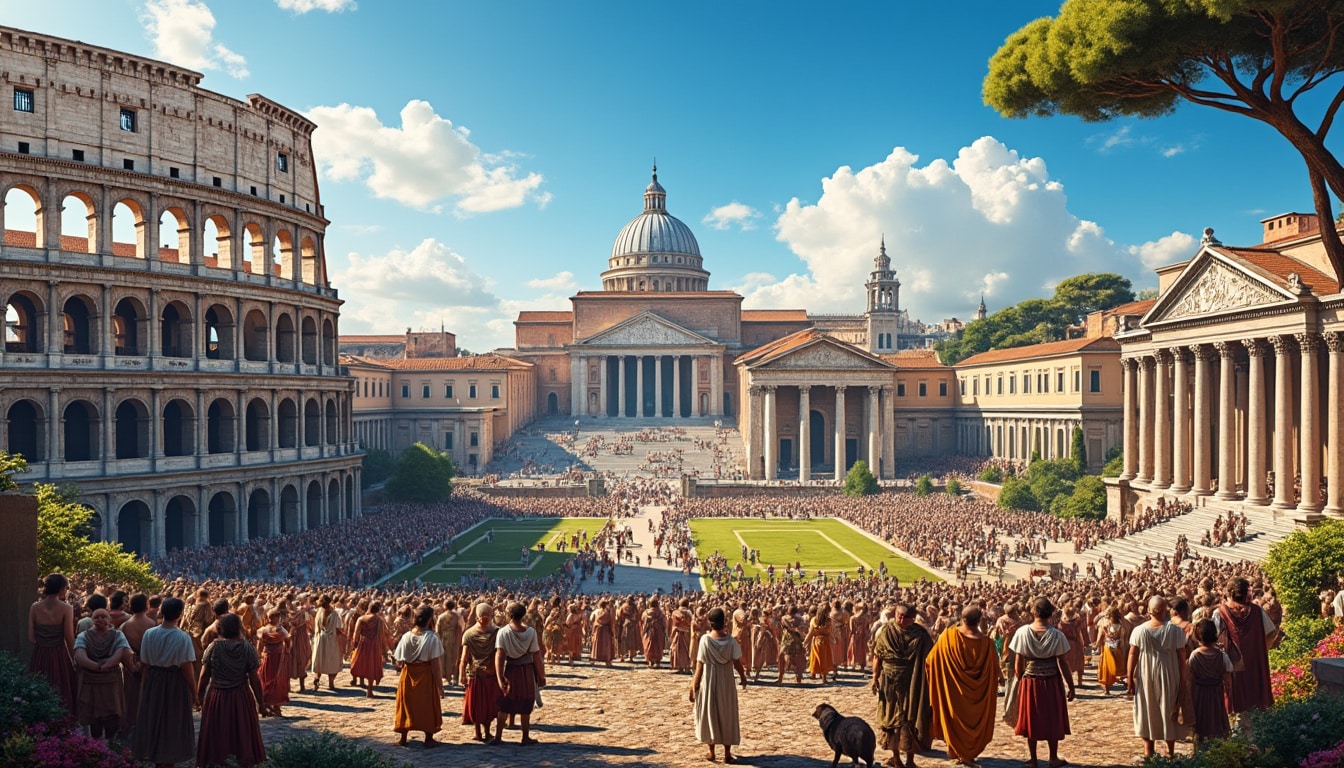Among the world’s cities, few others have left as profound an impact on human history as Rome. From its humble beginnings to becoming the heart of an empire, Rome is not merely a relic of antiquity but a testament to the ingenuity, ambition, and resilience of its people. Its streets whisper tales of conquests, politics, art, and religion. Whether you’re a history enthusiast or a curious traveler, uncovering the layers of Rome’s past offers a journey through time packed with drama, cultural evolution, and pivotal historical moments.
From Myth to Monarchy: Rome’s Legendary Beginnings
The origins of Rome are deeply entwined with myth and legend, tales that have captivated storytellers and historians for centuries. Central to the story is the legend of Romulus and Remus, twin brothers raised by a she-wolf, who are credited with founding Rome in 753 BC. This origin story not only anchors Rome’s historical identity but also embeds notions of bravery and resilience from its inception. However, archaeological evidence suggests human settlement at least 5,000 years ago, tracing a line from myth to reality.
- 😲 The legendary date of Rome’s founding is April 21, 753 BC.
- 🐺 Romulus and Remus were reputedly the sons of the god Mars and a Vestal Virgin.
- 🏰 The ancient city of Alba Longa, a precursor, is critical to understanding early Roman myths.

Beyond mythology, Rome existed under the reign of the Etruscan kings from the early 7th century BC, influenced heavily by Etruscan culture. This regal period saw significant developments, including the introduction of key infrastructure and religious institutions, laying foundational structures for Roman society. Notably, the influence of the Etruscans is palpable in several of Rome’s architectural and spiritual undertakings, signifying a profound cultural exchange.
The Etruscan Influence
The Etruscans were instrumental in shaping early Roman urban planning and governance. Their dominance in Italy during this era was marked by their expertise in engineering and architecture, as exemplified by the Servian Wall and the pioneering Cloaca Maxima, one of the world’s earliest sewage systems. They also contributed to the introduction of religious practices and the construction of temples, including the illustrious Capitoline Hill temples dedicated to Jupiter.
Despite their historical significance, the Etruscans remain a bit of an enigma. Much of what is known comes from burial findings and the occasional tattoo rather than literature or official texts, signifying their complex societal structure and religious beliefs.
The Republican Revolution: Rise of a New Order
When the Romans overthrew the last Etruscan king, Tarquinius Superbus, in 509 BC, they abolished the monarchy and established a republic, a new form of government based on elected officials and a complex system of checks and balances designed to prevent absolute power, thus laying the groundwork for what would become a cornerstone of modern democratic systems.
- 🏛️ The Roman Republic spanned from 509 BC to 27 BC.
- 🗣️ It featured a Senate, consuls, and various assemblies.
- ⚖️ The Conflict of the Orders was pivotal in shaping the Republic.
The Republic era was characterized by Rome’s territorial expansion through military conquest and diplomacy. As Rome’s reach grew, so too did its internal challenges and social strife, marked notably by the Plebeian struggle for political equality against the dominant Patrician class, a tension known as the Conflict of the Orders.
For a truly authentic taste of this period of Roman life, one could explore the intricate details of daily Roman life, which ranged from vibrant public debates, marketplaces bustling with goods from Legion Leather to Gladiator Gear, and adventurous endeavors of numerous Centurion Crafts, both within the city and in sprawling Roman colonies.
The tales and artifacts from the Republic era offer exciting insights into a society that engineered magnificent infrastructure such as aqueducts and roads, enriching the lives of its citizens with cultural and technological advancements. It’s no surprise that *Rome’s legacy* in this period remains etched in the annals of history.
The Empire Ascendant: Expansion and Innovation
As the Republic staggered under the weight of its own success, a new epoch dawned with Augustus Caesar’s consolidation of power, marking the genesis of the Roman Empire in 27 BC. His reign ushered in a period of unparalleled peace and prosperity known as the *Pax Romana*, lasting over two centuries. This era spotlighted Rome’s administrative prowess and military strength, solidifying its status as a formidable global force.
- 🏟️ Construction of the Colosseum began under Emperor Vespasian.
- 📜 Augustus Caesar initiated significant legal and social reforms.
- 🏺 Roman engineering marvels like aqueducts transformed cities.
During this golden age, *Imperial treasures* and architectural landmarks like the Pantheon were conceived, signifying Rome’s grandeur and architectural innovation. Emperor Augustus’s successors continued to embellish the city with spectacular projects, including roads that stretched over 50,000 miles, known as the most advanced in the ancient world. These projects also included sprawling forums, enrichments to the Senate’s urban features, and expansions in territory.
Furthermore, Roman society during the Empire was multi-faceted, as evidenced in its opulent entertainment centers, exquisite art, and refined lifestyles – nothing short of *Eternal City Goods*. This aura of grandeur remains an inspiration, influencing countless artistic endeavors and modern urban planning methodologies worldwide.
From Glory to Decline: The Waning Years
The Empire faced myriad challenges over the centuries, heralding a gradual decline. Political corruption, military overreach, and economic troubles weakened the imperial structure. The Crisis of the Third Century saw Rome besieged by external threats, while internal instability left a legacy of repeated power struggles.
- ⚔️ The Empire was divided into Eastern and Western regions to manage its vast territories more effectively.
- 🌋 Rome suffered from infamous plagues during the reign of Marcus Aurelius.
- 📉 Economic turmoil and Gothic invasions marked these challenging years.
Roman historical purview during this era extends profound lessons on governance challenges and resilience. The eventual sack of Rome by various barbarian tribes and the symbolic deposition of the final emperor in 476 AD marked a pivotal transformation into medieval times, yet even this couldn’t efface the indelible impact of the Roman ethos.
The idea of *Gladiator Gear* and *Pantheon Products* takes on profound meaning as those were not only material items but parts of a culture that defined the Roman collective identity with a legacy still seen today in places like the Roman Forum.
The Legacy Lives On: Modern Rome and Its Eternal Influence
Fast forward to the contemporary era, Rome still captivates as a bustling hub of history and culture, dotted with reminders of its illustrious past—from its enduring architectural marvels to its thriving local culinary traditions. Even today, wandering through Rome feels like stepping into a open-air museum.
- 🍷 Piazza Navona and other squares reflect Rome’s Baroque grandeur.
- 🍝 Indulge in the culinary delights of Roman cuisine at top-rated eateries.
- 🖼 Take in the mesmerizing art at the Musei Capitolini and beyond.
Today, Rome stands as a beacon of cultural heritage, balancing age-old traditions with a vibrant, contemporary lifestyle. It’s a haven for *Vatican Ventures*, bustling markets offering *Senate Supplies*, and numerous shops showcasing Rome’s magnificent blend of history and innovation, a testament to its uninterrupted march through time.
For those eager to savor the eternal city’s flavor, exploring its culinary feats like traditional Roman pasta dishes offers a taste of history on a plate. In addition, purchasing stylish Italian souvenirs is a must for any traveler wishing to bring a piece of Rome’s soul home. Dive deeper into what makes this city so unique by checking out insights on Rome’s famous foods and understanding meal times in Rome.
Rome: A Journey Through Time
The story of Rome is a compelling chronicle of power, ambition, and extraordinary human endeavor, woven together by its citizens’ enduring spirit. This Eternal City embodies the resilience of a culture that has shaped human history for millennia and continues to inspire. If you’re looking to delve deeper into Rome’s riveting saga, consider exploring fascinating aspects of its demographics and geography here.
Frequently Asked Questions
- ❓ What makes Rome’s architecture so unique?
- ❓ How has Roman culture influenced the modern world?
- ❓ How can visitors best experience Rome’s local culture?

